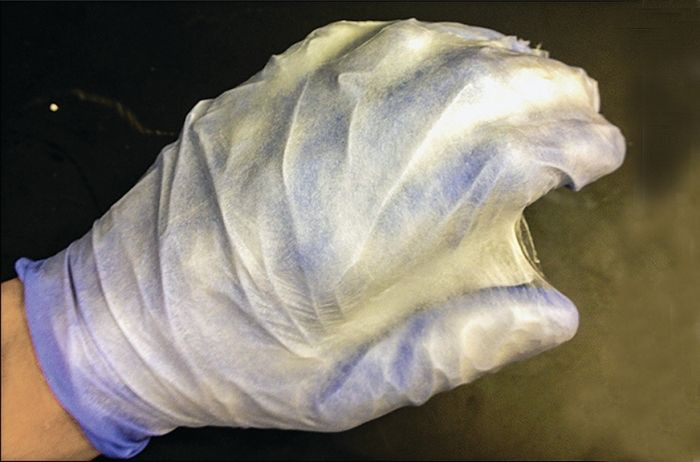Stitches Out, Polymer Nanofibers In: Sticky 'Mats' Shot From Ordinary Airbrushes Seal Wounds Pain-Free

Medical science is making unimaginable leaps in progress, from laser therapies to advanced brain imaging techniques. So how come the best solution we have for repairing a tear in the skin is still a needle and some thread? University of Maryland researchers hope to change that, as their polymer nanofibers may someday supplement or replace stitches.
The team’s latest breakthrough involves getting the polymer onto the skin. Previously, they tried using a technique known as electrospinning, which essentially uses an electrical charge to tease out the fibers from a liquid substance. But doing this directly within the animal set to receive the fibers is dangerous, so the team went back to basics: They used an ordinary airbrush.
“Using an airbrush to deposit biomaterials directly onto tissue is quite enticing and has potential in many areas of medicine,” said Jeffrey M. Karp, a bioengineer and co-director of the Center for Regenerative Therapeutics at Brigham & Women’s Hospital, in a news release.
The nanofibers aren’t just designed to seal wounds. They also have potential to act as drug-releasing implants and skeletons for tissue engineering. The fibers are biodegradable, which means the cells can easily accept them within a matter of weeks, senior author and UMD bioengineer Dr. Peter Kofinas, told Medical Daily. However, “the technology is still in animal trials, so it should take a few years before it can get to market.”
Kofinas and his team used the materials to repair lesions from diaphragm hernias and cuts to the lung, intestine, and liver in a pig. Within 24 hours, the cells were still accepting the polymer, which is already in use in a range of devices approved by the Food and Drug Administration, such as existing sutures and grafts. The current version of the mats contains fibers as narrow as 370 nanometers.
By the time the product reaches mass markets, the goal is for it to quickly seal wounds without the existing discomfort of stitches, which must be pulled through the skin. Currently, the nanofiber mats degraded within 42 days, which is far longer than the average week to two-week time period for stitches, yet may shorten as the technology advances. What’s more, any acetone in the polymer evaporated in testing before the nanofibers got deposited, suggesting the polymer won’t be toxic to humans.
The polymer is but one of many recent developments in the field of alternative wound healing. Recently, researchers developed a glue that (literally) mends broken hearts. Once the glue enters the targeted lesion of blood vessels, the team shines an ultraviolet light on the substance that causes the molecules to bind together. After the molecules form a rubber-like chain, they can withstand the pressures of a beating heart and other forces.
Source: Behrens A, Casey B, Sikorski M, et al. In Situ Deposition of PLGA Nanofibers via Solution Blow Spinning. ACS Macro Letters. 2014.



























